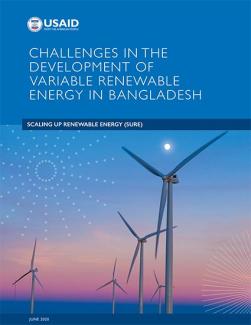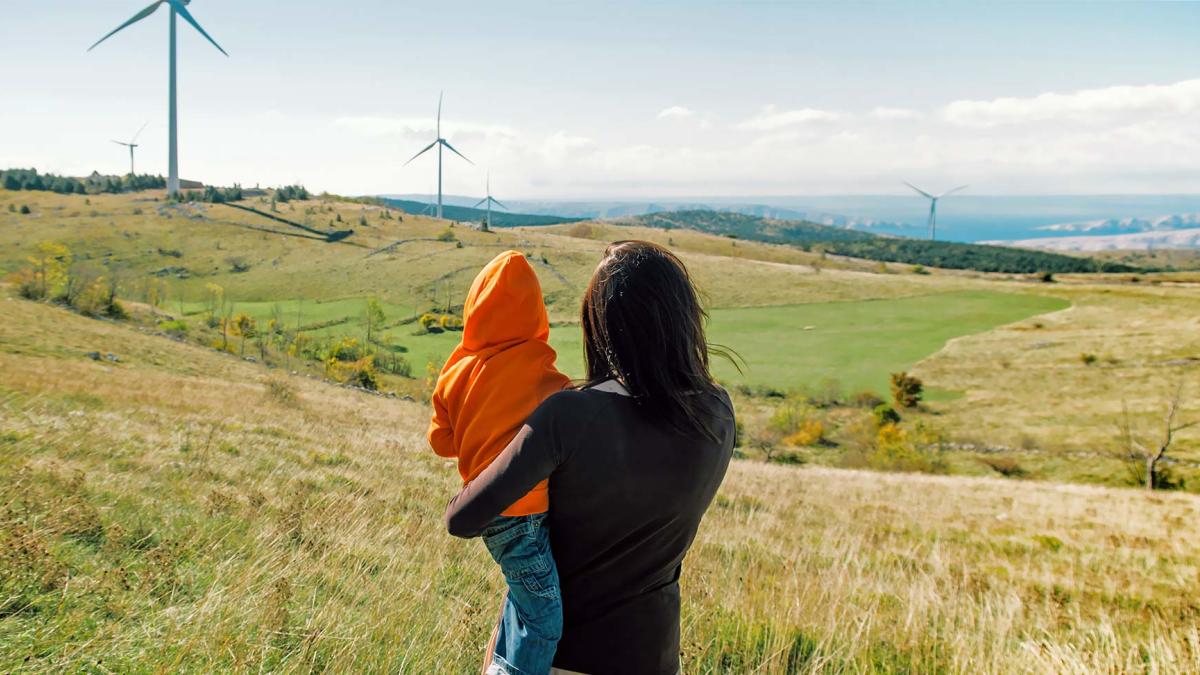Challenges in the Development of VRE in Bangladesh
SURE
Report – June 2020
Energy stakeholders outline barriers to scaling up variable renewable energy (VRE) in Bangladesh and present solutions to spur growth in grid-connected renewables.
As auction programs mature and the share of variable renewable energy (VRE) in power systems increases, many countries find that grid integration concerns become a real barrier to scaling up renewable energy. Policymakers’ objectives often evolve from low power generation costs to enhancing dispatchability and improving the value of renewable energy.
In Bangladesh, researchers, think tanks, agencies, and others who work in the energy sector have identified the most critical challenges hindering the development of grid-connected VRE and provided recommendations that address those challenges. The Government of Bangladesh now has a roadmap for action that will lead to increased clean electricity production.
Bangladesh has much to gain from increasing the share of renewable energy in its energy generation capacity and has already made progress in the off-grid renewables sector. It has been less successful in increasing the share of grid-connected renewables and now needs to focus on interventions that can remove the current barriers affecting renewable energy development.
Increasing the amount of electricity generated from renewable energy helps to:
- Satisfy projected increase in demand;
- Meet international greenhouse gas emission reduction pledges;
- Mitigate reduced availability of indigenous natural gas resources;
- Improve energy security through displacing imported fossil fuels; and
- Achieve 100 percent electrification and access to modern energy for all.
However, to date, large utility-scale renewable energy has been slow to take off. Bangladesh’s efforts to increase the share of renewables lag behind many of its South Asian peer countries and comparable developing countries around the globe.
Global Context
Internationally, new capacity from renewables in 2018 exceeded new installed capacity from conventional and nuclear power combined, and 26.1 percent of the total global electricity production (26,614 terawatt hours (TWh)) came from renewable energy sources. If large hydropower is excluded, other renewables still make up almost 10 percent of global electricity production. The marked increase in worldwide renewable energy capacity has been due largely to falling equipment prices and policy initiatives and targets set by governments. Prices for solar photovoltaic (PV) modules are about five times lower than they were in 2008.
Bangladesh Context
Bangladesh relies predominantly on fossil fuel–based power plants to meet its electricity demand. According to the Bangladesh Power Development Board, as of 2019 natural gas accounted for about 57 percent of installed capacity, with another 32 percent of capacity comprising liquid fuels, mainly furnace oil and diesel. Future demand will need to be met by imported gas. With only 11.47 trillion cubic feet (TcF) of natural gas reserves remaining, and with annual production of 0.97 TcF in 2018, indigenous gas reserves will only last until 2026, according to a British Petroleum report. The government is currently importing liquefied natural gas to make up the difference.
According to Bangladesh’s Power System Master Plan, coal-fired power plants are expected to play an increasing role in the energy mix of installed generation capacity in the next two decades, although the coal reserves in Bangladesh are expensive to mine and future coal requirements will have to be imported. Bangladesh’s current demand for liquid fuels to power electricity production is about 850 million liters per annum. If the demand from transportation and industry also are considered, the country’s local production can only meet five percent of the total energy demand. Therefore, Bangladesh’s current trajectory is leading to even greater energy security risks for the country.
Bangladesh has significant solar energy potential throughout the country due to its geographic location. A study has shown that the total grid-connected solar PV potential in Bangladesh could be as high as 50 gigawatts (GW). A recent wind assessment study completed by the National Renewable Energy Laboratory demonstrated that an area of more than 20,000 square kilometers exhibits wind speeds of between 5.75 and 7.75 meters per second, with a gross wind potential of more than 30 GW. New hydropower opportunities are limited in Bangladesh, with the exception of a few potential micro-hydro sites in the Chittagong Hills area.
Challenges and Recommendations in Developing Renewable Energy in Bangladesh
Although large-scale renewable energy development has been slow to take off, Bangladesh has laid the foundation for scaling up grid-connected renewable energy and now needs to provide focused support to this nascent industry.
Based on extensive consultation with key energy experts, a thorough literature review, and group discussions from various energy workshops, this white paper presents Bangladesh’s challenges and categorizes the solutions in seven focus areas.
Policy
Key Challenge
Limited incentives to accelerate the development of grid-connected renewable energy.
Key Action
Formulate thoughtful policies, guidelines, and incentives to attract competent developers and investment.
Land
Key Challenge
Land scarcity for constructing the necessary infrastructure for renewable energy.
Key Action
Conduct a land study that identifies options for land use for utility-scale renewable energy, including exploring options for zoned renewable energy areas.
Grid Network
Key Challenge
Limited spare grid capacity in current network and failure to determine the exact amount of grid capacity available.
Key Action
Conduct a study to identify areas of spare capacity where renewable energy plants might connect to the grid. Identify network upgrades that could easily unlock further capacity.
Renewable Energy Resource and Potential
Key Challenge
Limited mapping of wind and solar resource potential in Bangladesh.
Key Action
Conduct resource potential studies that identify zones for renewable energy project development. Identify constraints such as land availability, road access, and grid expansion plans.
Financing
Key Challenge
Lack of experience among commercial banks, who are wary of investing in renewable energy projects and generally offer unfavorable loan terms and high interest rates.
Key Action
Conduct a formal sector-wide engagement with the community of local and international lenders to understand their lending requirements and how to address key risks that affect project bankability.
Procurement
Key Challenge
Lack of information in government-driven procurements that makes it difficult to submit bids with competitive prices.
Key Action
Formalize the bidding process with a transparent and fair evaluation of bids as unsolicited proposals tend to produce higher bid prices.
Institutional Capacity
Key Challenge
Lack of institutional capacity within the public and private sectors and poor coordination between government institutions.
Key Action
Institute a working plan to improve the knowledge and institutional capacity within public utilities, specifically for utility-scale renewable energy.




